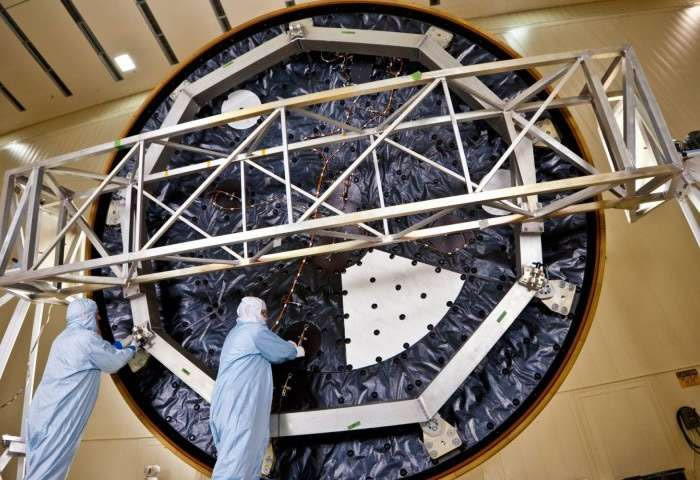World’s most heat resistant material record set
Tantalum carbide and hafnium carbide materials can withstand scorching temperatures of nearly 4000°C, has been discovered by researchers.
In particular, the team from Imperial College London discovered that the melting point of hafnium carbide is the highest ever recorded for a material. Being able to withstand temperatures of nearly 4000°C could pave the way for both materials to be used in ever more extreme environments, such as in heat resistant shielding for the next generation of hypersonic space vehicles.
Tantalum carbide (TaC) and hafnium carbide (HfC) are refractory ceramics, meaning they are extraordinarily resistant to heat. Their ability to withstand extremely harsh environments means that refractory ceramics could be used in thermal protection systems on high-speed vehicles and as fuel cladding in the super-heated environments of nuclear reactors. However, there hasn’t been the technology available to test the melting point of TaC and HfC in the lab to determine how truly extreme an environment they could function in.
The researchers of the study, which is published in the journal Scientific Reports, developed a new extreme heating technique using lasers to test the heat tolerance of TaC and HfC. They used the laser-heating techniques to find the point at which TaC and HfC melted, both separately and as mixed compositions of both.
They found that the mixed compound (Ta0.8Hf0.20C) was consistent with previous research, melting at 3905°C, but the two compounds on their own exceeded previous recorded melting points. The compound TaC melted at 3768°C and HfC melted at 3958°C.
Space race
The researchers say the new findings could pave the way for the next generation of hypersonic vehicles, meaning spacecraft could become faster than ever.
Dr Omar Cedillos-Barraza, who is currently an Associate Professor at the University of Texas – El Paso, carried out the study while doing his PhD at Imperial’s Department of Materials.
Dr Cedillos-Barraza said: “The friction involved when travelling above Mach 5 – hypersonic speeds – creates very high temperatures. So far, TaC and HfC have not been potential candidates for hypersonic aircraft, but our new findings show that they can withstand even more heat than we previously thought – more than any other compound known to man. This means that they could be useful materials for new types of spacecraft that can fly through the atmosphere like a plane, before reaching hypersonic speeds to shoot out into space. These materials may enable spacecraft to withstand the extreme heat generated from leaving and re-entering the atmosphere.”
Examples of potential uses for TaC and HfC could be used in nose caps for spacecraft, and as the edges of external instruments that have to withstand the most friction during flight.
Currently, vehicles going over Mach 5 speeds do not carry people, but Dr Cedillos-Barraza suggests it may be possible in the future.
Dr Cedillos-Barraza added: “Our tests demonstrate that these materials show real promise in the engineering of space vehicles of the future. Being able to withstand such extreme temperatures means that missions involving hypersonic spacecraft may one day be manned missions. For example, a flight from London to Sydney may take about 50 minutes at Mach 5, which could open a new world of commercial opportunities for countries around the world.”
More information: Phys.org



Comments are closed, but trackbacks and pingbacks are open.